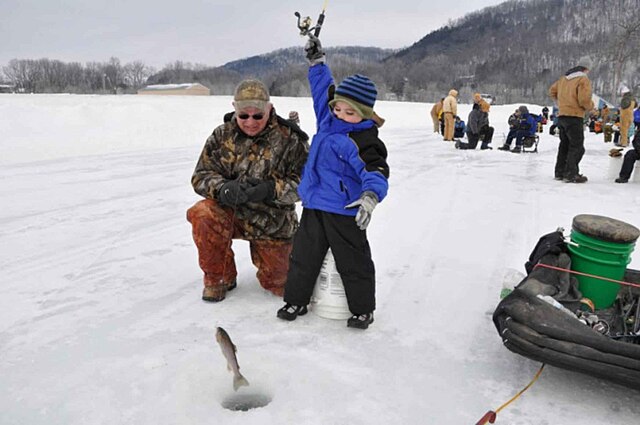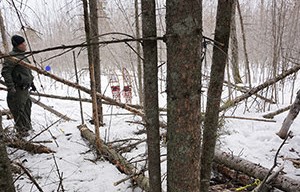Snow Sports
Ice-Sport Safety: Because You’re Not the Guy Who Walks on Water
Nobody plans to fall through the ice …
One of the best things about living up North is the cold-weather sports. Between the frigid temperatures and the broad, fish-filled Great Lakes, nobody knows ice sports better than Michiganders. (Okay, Wisconsinites get a ribbon, too.) That’s why today’s ice-safety message comes from the great state of Michigan, with real-world information about how to best gauge the quality of the ice.
“Even during consistent cold stretches, pressure cracks in the ice can develop within hours,” said Lt. Skip Hagy, Michigan DNR law enforcement supervisor in Newberry. “There is no such thing as ‘safe’ ice. Always check conditions for yourself; don’t rely on what you see others doing or what they tell you.”
River mouths and other places where river or lake currents may be located are often places of unstable ice. Reservoirs with changing water levels also require great caution.
Frozen bodies of water should be checked very carefully before braving the ice. While there is no perfectly reliable method to determine if ice is safe, you can use a spud, needle bar or auger to test the thickness and quality of ice.
“Keep in mind that warm spells as brief as one day may weaken the ice,” Hagy said. “Melting ice during the day only partially refreezes at night, creating a thin layer of unstable ice.”
The DNR suggests wearing a buoyant fishing jacket or snowmobile suit. Additionally, wear a U.S. Coast Guard-approved life jacket as the outermost layer of clothing, and have a pair of ice picks and a whistle clipped to your chest.
“Nobody plans to fall through the ice, but you should be prepared in case it happens,” Hagy said. “If you fall through the ice, the most important thing is to remain calm and return in the direction you came from. Return to the ice where you broke through, and pull yourself out of the water, rolling onto the ice. Don’t try to stand. Instead, crawl to help distribute your weight until you feel you’re safely away from the weak spot. Seek help immediately to prevent hypothermia.”
Additional ice safety tips include:
- If there’s ice on the lake but water around the shoreline, use extra caution.
- If you are visiting a new area, ask locals at bait shops, restaurants or stores about ice conditions, but always check conditions for yourself before going onto the ice.
- If you’re walking on the ice, wear a pair of ice-cleats to help with traction.
- Wear bright colors to increase your visibility. White clothing and gear are difficult to see.
- Use the buddy system and tell someone who is staying on shore where you will be and when you plan to return.
- If you’re operating a snowmobile or off-road vehicle, ride in a staggered line. This makes it easier to maneuver in case a rider ahead of you breaks through the ice.
“Ice picks are inexpensive insurance, a great purchase or gift for anyone who ventures onto ice-covered bodies of water,” Hagy added.
-

 Hiking & Climbing1 week ago
Hiking & Climbing1 week agoWhen Bears Bring the Drama: A Tail—or Should I Say “Tale”?
-

 Adventure1 month ago
Adventure1 month agoREACTION: Trump’s Make America Beautiful Again Agenda
-

 Gear2 months ago
Gear2 months agoLet Freedom RING! Primary Arms’ Independence Day Category Sale Starts NOW
-

 Adventure2 months ago
Adventure2 months agoU.S. Bighorn Sheep Going Home to Canada
-

 Camping & Survival3 days ago
Camping & Survival3 days agoField Dressing 101: Knowing When It’s Their Turn
-

 Fishing1 month ago
Fishing1 month agoMy Wacky Bush Brings All the Bass to the Yard
-

 Adventure3 weeks ago
Adventure3 weeks agoNo Ivy Required: University of Montana’s New Center for Hunting and Conservation




